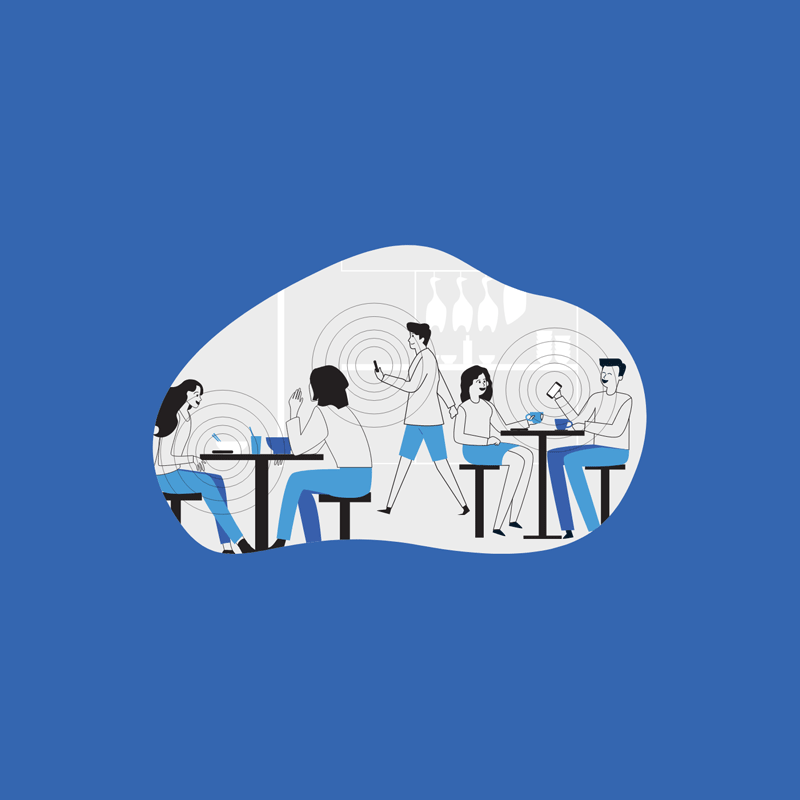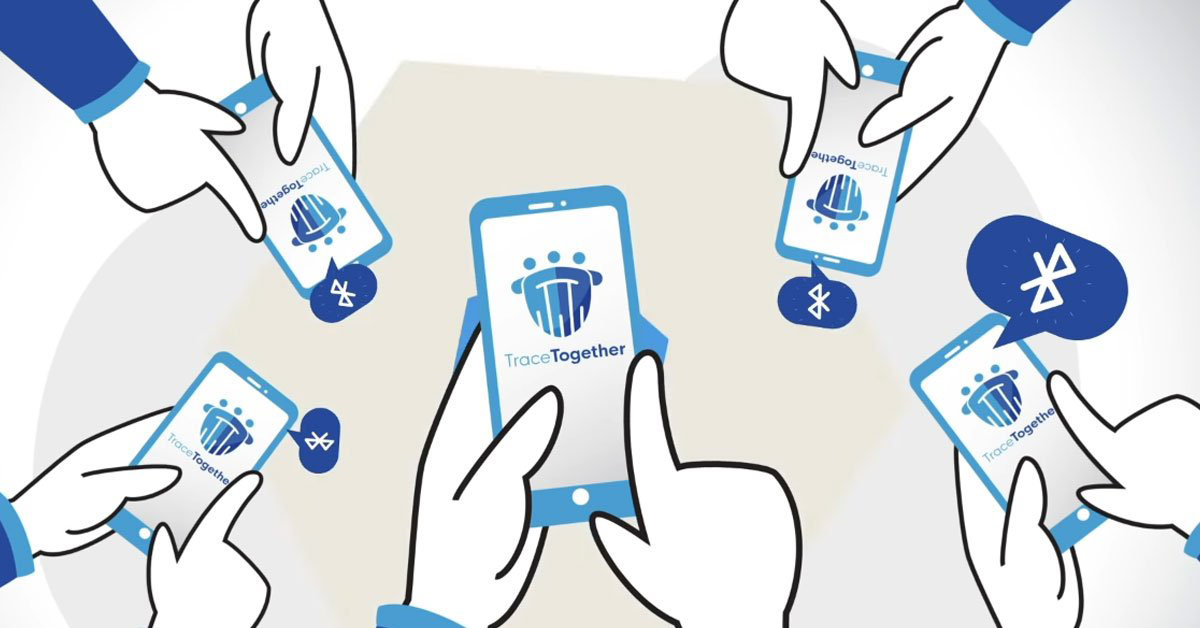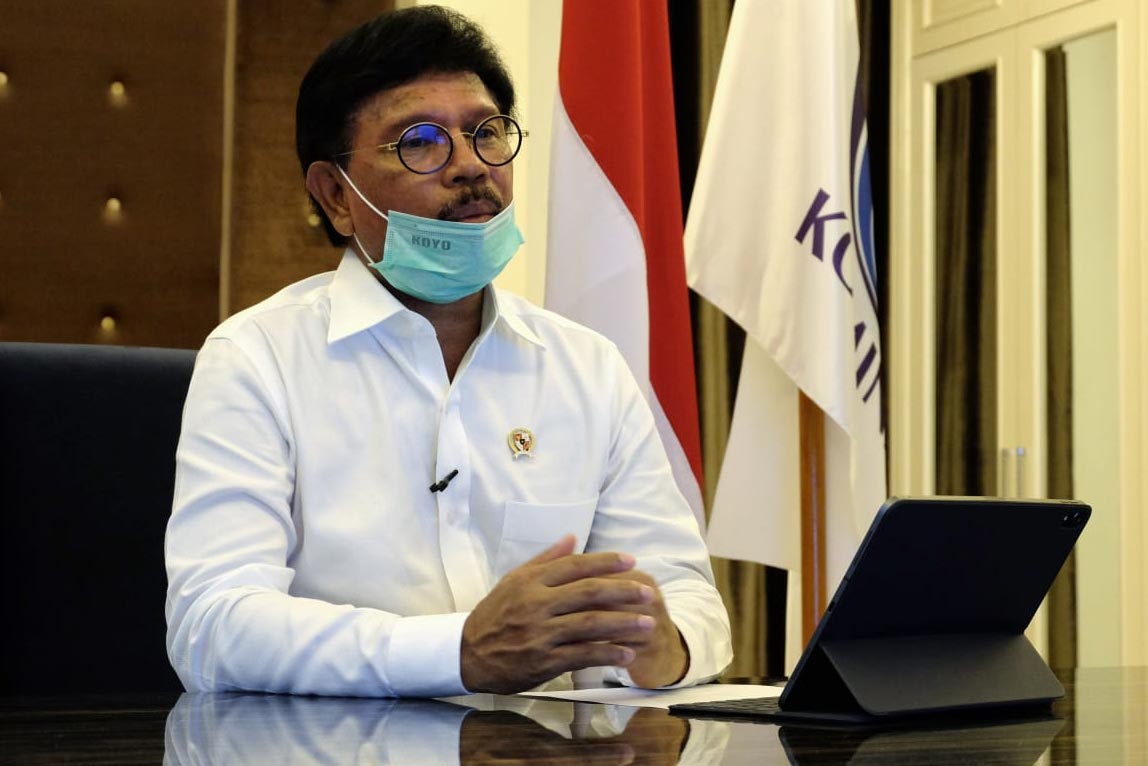
The novel Wuhan 'COVID-19' coronavirus has infected hundreds of thousands of people and killed tens of thousands.
While many governments have closed their borders, implemented a varying degree of lockdowns, urged people to stay indoors and maintain social distancing, there is no saying who or where will be the next coronavirus victim. Before a proper cure can be found, one of the ways to prevent the spread, is to understand how the modern mobile-driven society helped its spread.
And one of the best way to do this, is by using a method called 'contact tracing'.
Humans are social creatures. With families, friends, neighbors and colleagues, people's social circle vastly differs. And this is one of the reasons why people may not remember everyone they've just met or have been in contact with.
This is where the TraceTogether comes into play.
Developed by Government Technology Agency (GovTech) with the help of Singapore's Ministry of Health (MOH), the app uses Bluetooth to identify who its users have been with, rather than using GPS to know where they've been.
It began in Singapore, where the country has been combating COVID-19 since its first case of confirmed infection on 23 January 2020. Singapore was quick in tracing people, with most of the credit comes from the country’s rapid responses.
Working in collaboration with healthcare at hospitals, as well as the Singapore Police Force, the contact tracers at the MOH have identified thousands of close contacts who have been quarantined.
While contact tracing has helped Singapore contain the spread of the virus, the process of contact tracing itself is labor-intensive. And because humans can forget who they've met, even the most strenuous efforts of contact tracing can be thwarted.
What's more, there is simply no way for anyone to easily identify strangers they might have come into contact with.
Using the TraceTogether app, Singapore is giving people the chance of having a contact tracer right with them at all times.
Most tracing apps out there use GPS to know users' location, and trace them as they go on a daily basis. This location-based service works very well in wide and open spaces. But when it comes to indoors or crowded places, GPS can be poor.
Things can also be difficult in apartments or malls, as explained by Jason Bay, Senior Director of Government Digital Services at GovTech.
"If you are one floor down in a building, your GPS location could look the same as someone in the floor above you because of signal reflections and multipath propagation effects," he said.
And aside from the technical challenges, using GPS for contact tracing also raises serious privacy and data security concerns. If users are hesitant to download the app for fear of inadvertently revealing their movements, the ability to connect the dots would greatly diminish.
Because tracing using GPS to curb the spread of coronavirus is not reliable, GovTech uses Bluetooth instead.
Using Bluetooth, TraceTogether can warn users they are within close range of an infected area/person.
"So instead of attempting to tackle the issue of contact tracing by answering the question of ‘where,’ we address contact tracing by answering the question of ‘who’,” explained Bay. "After all, you could argue that the virus doesn’t care where transmission happens; it’s only interested in whether there is a hospitable host in close contact."

This is how it works:
Bluetooth that is a common function in smartphones, is utilized by TraceTogether to force users to practice social distancing.
When the app is installed on a mobile device, it will start sending four encrypted pieces of information: a timestamp, Bluetooth signal strength, the phone’s model, and a temporary identifier or device nickname. These encrypted data would be retrieved by other phones with the app installed.
This way, each phone can literally detect other participating TraceTogether phones that are in close proximity.
If someone with TraceTogether is diagnosed with COVID-19, he or she can simply upload their data. The app will then contact other TraceTogether users who have been in close contact of the confirmed COVID-19 case.
In other words, TraceTogether is a community-driven contact tracing. The more people use the app, the better the contact tracing would be.
The hope is that the app can help contact tracers uncover previously unknown close contact with COVID-19 cases, and speed up the contact tracing process, Bay concluded.
As an open-source app, TraceTogether's source code is made freely available and may be redistributed and modified.
"We believe that making our code available to the world will enhance trust and collaboration in dealing with a global threat that does not respect boundaries, political systems or economies," said Vivian Balakrishnan, who is a Singaporean politician serving as Minister for Foreign Affairs since 2015.
"Together, we can make our world safer for everyone."

With promising results, Indonesia follows Singapore's footsteps.
The country's Ministry of Communication and Information Technology has partnered with the Ministry of Health, Ministry of State Owned Enterprises, the National Agency for Disaster Countermeasure (BNPB), and telecommunication companies to unleash tracing, tracking and fencing of COVID-19 using its own version of TraceTogether.
The app called 'PeduliLindungi' has the same concept as Singapore's TraceTogether. It is meant to be installed on Patient Under Supervision (PUS) and suspected people. And because it is also to be installed on coronavirus-positive patients, the app can prevent the patients to go beyond their quarantine zone, that according to Indonesia's Minister of Communication and Information Technology, Johnny G. Plate.
Surveillance concerning COVID-19 include data gathering, data analysis, data dissemination.
And not only just tracing, tracking and fencing, as the app can also send warning when users are in close proximity with COVID-19 patients. If so, the users would be included in the People Under Monitoring (PUM).
"Contact tracers can use the app to log coronavirus patients for up to 14 days. The app can also be linked to other cellular provider for a similar visualization, the Minister explained.
In Indonesia, the government also wants to monitor places where people gather, in order for them to maintain social distancing.
This is done not using GPS, but rather using users phone number or MSISDN (Mobile Subscriber Integrated Services Digital Network Number), which users can give willingly. This way, warning can also be sent through SMS blasting.
To preserve users' privacy, not only that the app doesn't use GPS, it also encrypts data as it gathers them.
Only when requested by the government, users can send their logs to facilitate the contact tracing process. Up to that point, the authorities have no knowledge of the user's data. The authorities can only retrieve the data after providing the app users a code that should be matched with a corresponding verification code inside the app.
Once authenticated, users will be given a PIN that allows submission of logs when entered.
It's only when contacted by the contact tracers, that users will be asked to share their data logs, in which they should comply.